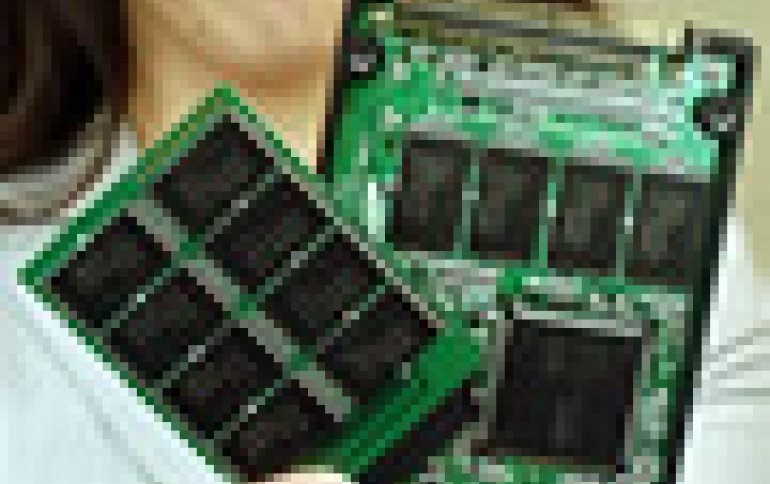
Samsung Launches Flash Disk for Mobile PCs
Samsung Electronics announced at the Mobile Solution Forum that it has begun offering a 32-Gigabyte NAND flash-based solid state disk (SSD) for mobile computing applications.
The 32GB Flash-SSD, which serves the same purpose as a hard disk drive. It uses instantly-accessible, non-moving NAND flash memory instead of the rotating discs found in hard drives; therefore can upload and download data quickly and quietly with minimal power consumption.
The Flash-SSD weighs only half as much as a comparably-sized hard drive, but reads data three times faster and writes data 1.5 times faster. For instance, a 1.8" type SDD reads at 57Mbps, while a 1.8" hard disk drive reads at approximately 15Mbps.
The SSD uses just five percent of the electricity needed to power a hard disc drive and is noiseless. Its design is free of any motor or other mechanical parts.
Samsung showcased its 32 SDD at the CeBIT some days ago. The solid-state disk was demonstrated inside a Samsung laptop computer. The desktop appeared on the screen of the SSD laptop in about 18 seconds while the hard-drive-based computer took about 31 seconds to reach the same point.
However, the major hurdle that needs to be overcome before SSD can reach mass market is price. Flash memory costs around $30 per gigabyte; the memory needed for the 32GB SSD drive works out to about $960, before any other costs are taken into account.
Samsung thinks there are some military or industrial customers that have specialist applications that would benefit from the SSD and so might be more willing to pay a premium.
Prices for flash memory are expected to come down. In May last year, when Samsung first announced the technology, the flash memory price was about $55 per gigabyte. So it might just be a matter of time before such disks hit the mass market.
Samsung sees the overall global SSD market surging from US$540 million in 2006 to US$4.5 billion by 2010.
The company did not disclose any details about the commercialization of its Flash-SSD in the mass mobile PC market.
The Flash-SSD weighs only half as much as a comparably-sized hard drive, but reads data three times faster and writes data 1.5 times faster. For instance, a 1.8" type SDD reads at 57Mbps, while a 1.8" hard disk drive reads at approximately 15Mbps.
The SSD uses just five percent of the electricity needed to power a hard disc drive and is noiseless. Its design is free of any motor or other mechanical parts.
Samsung showcased its 32 SDD at the CeBIT some days ago. The solid-state disk was demonstrated inside a Samsung laptop computer. The desktop appeared on the screen of the SSD laptop in about 18 seconds while the hard-drive-based computer took about 31 seconds to reach the same point.
However, the major hurdle that needs to be overcome before SSD can reach mass market is price. Flash memory costs around $30 per gigabyte; the memory needed for the 32GB SSD drive works out to about $960, before any other costs are taken into account.
Samsung thinks there are some military or industrial customers that have specialist applications that would benefit from the SSD and so might be more willing to pay a premium.
Prices for flash memory are expected to come down. In May last year, when Samsung first announced the technology, the flash memory price was about $55 per gigabyte. So it might just be a matter of time before such disks hit the mass market.
Samsung sees the overall global SSD market surging from US$540 million in 2006 to US$4.5 billion by 2010.
The company did not disclose any details about the commercialization of its Flash-SSD in the mass mobile PC market.





















